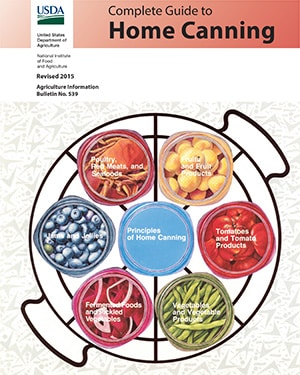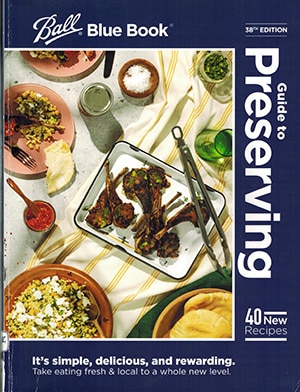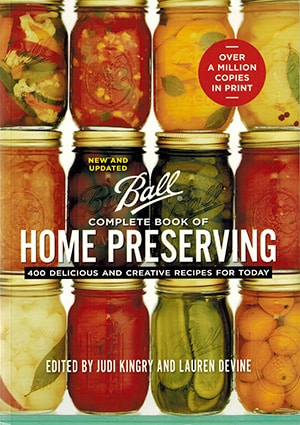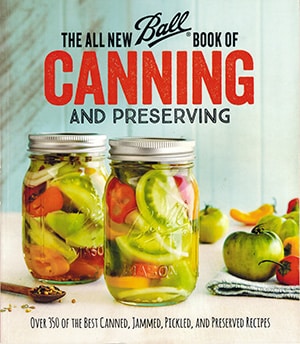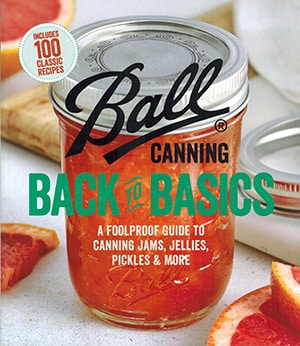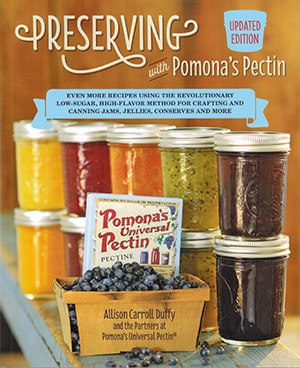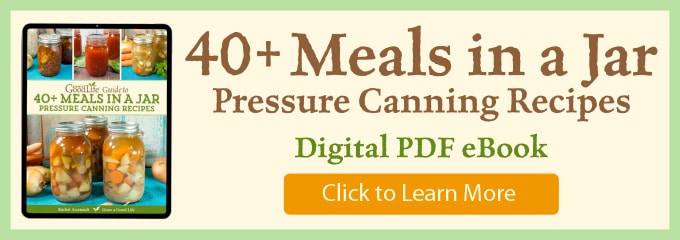Safe Canning Books to Add to Your Library
This post may contain affiliate links, which means that I may receive a commission if you make a purchase using these links. As an Amazon Associate I earn from qualifying purchases.
Looking for reliable canning books? Not all recipes are safe for home canning, so it’s important to use trusted sources backed by research. Here is a list of the best home canning books, packed with scientifically tested recipes to keep your preserved food safe and delicious!
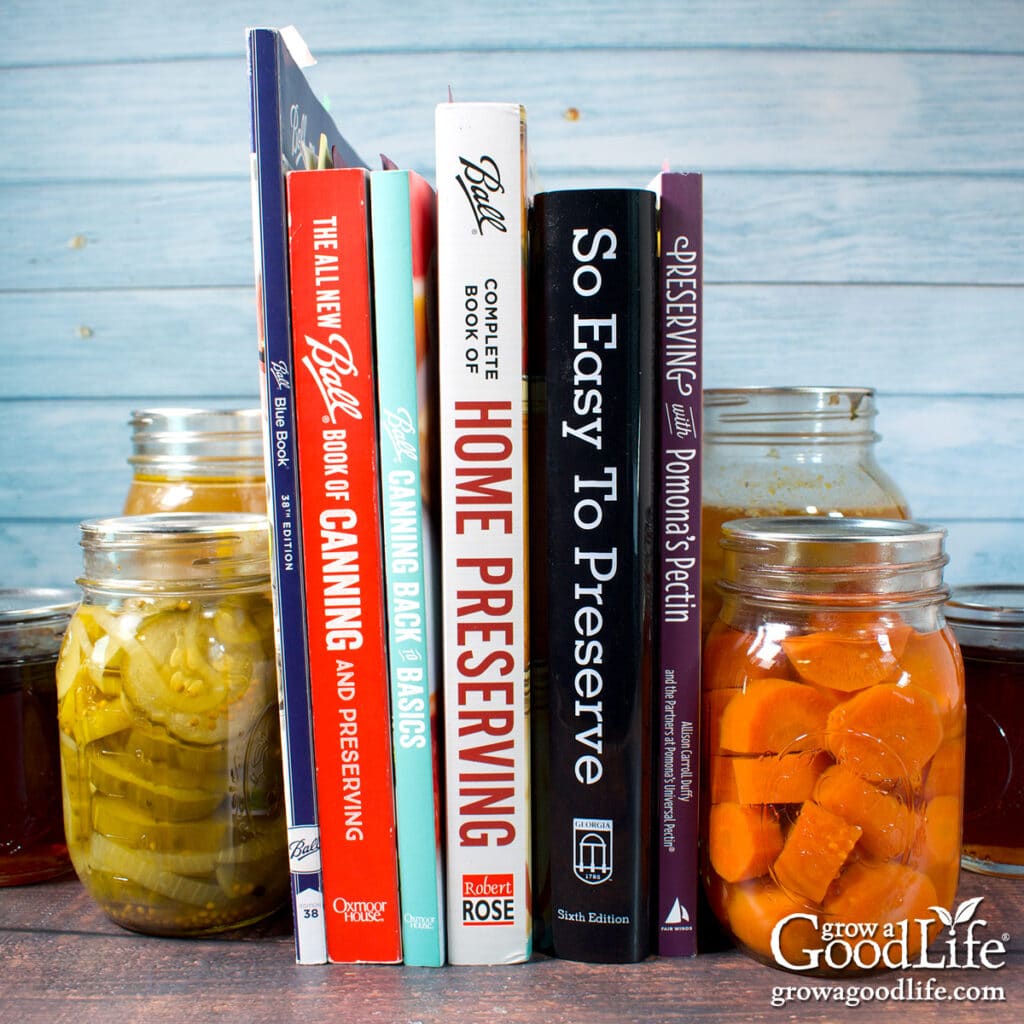
Safe canning starts with updated canning recipes that have been scientifically lab-tested and determined to be safe for home canning. Whether you’re new to canning or have been preserving food for years, these canning books will serve as valuable guides in your kitchen.
When it comes to home canning, having a trusted resource at your fingertips is essential. Safe canning practices are based on scientific research to ensure that the food you preserve is not only delicious but also safe for long-term storage. While there are many canning books available, not all of them follow the most up-to-date, research-tested guidelines and canning process.
Choosing the right books for your canning library means selecting those that provide clear, tested, and reliable recipes. The trusted books I recommend below follow the latest safety recommendations from experts in food preservation. These are the best canning books and will serve as valuable guides in your kitchen to help you stock your food storage shelves.
What Does a Safe, Tested Canning Recipe Mean?
A safe, tested canning recipe is one that has been scientifically validated to ensure food safety. These recipes are developed through rigorous laboratory testing to determine the correct processing time, temperature, and acidity levels needed to prevent foodborne illnesses.
The Science Behind Safe Canning
Safe canning recipes are grounded in rigorous scientific research to ensure that preserved foods remain safe and free from harmful microorganisms. Recipes are tested in laboratories to confirm they reach the necessary temperature inside the jar to kill harmful microorganisms. Key factors influencing the safety of canned products include:
- Heat Penetration and Transfer: Understanding how heat moves through a jar during processing is crucial. Proper heat penetration ensures that even the center of the jar reaches temperatures sufficient to destroy pathogens.
- pH Levels: The acidity of a food determines its processing method. High-acid foods (pH 4.6 or lower) can be safely processed using boiling water baths, while low-acid foods require pressure canning to achieve higher temperatures necessary for safety.
- Time and Temperature: Precise processing times and temperatures are established through testing to ensure all potential bacteria and spores are destroyed. Deviations can compromise the safety of the canned product.
Why is this important? When food is stored at room temperature, it becomes vulnerable to harmful pathogens. Safe canning recipes are backed by scientific research to ensure that food is properly processed, eliminating bacteria and preventing the growth of dangerous microorganisms. By using tested recipes, you can be confident that your jars are safely preserved and suitable for long-term storage, protecting both your food and those who enjoy it.
Trusted Sources for Safe Canning Recipes
Establishing safe canning practices requires extensive scientific research conducted by food science experts in laboratory settings. This research is primarily carried out by university extension offices under the USDA, and private companies like Ball, which has a long-standing reputation in home canning.
One of the leading authorities on home food preservation is The National Center for Home Food Preservation (NCHFP) at the University of Georgia. The NCHFP collaborates with other university extension offices to research, develop, and publish science-based canning guidelines and recipes, ensuring home canners have access to the safest methods available.
Ball (Bernardin in Canada) is another trusted source for safe canning recipes. With a dedicated team of food preservation experts, Ball rigorously tests its methods in independent laboratories. Now owned by Newell Brands, Ball has a rich history in home canning and continues to produce reliable books with well-tested recipes and guidelines.
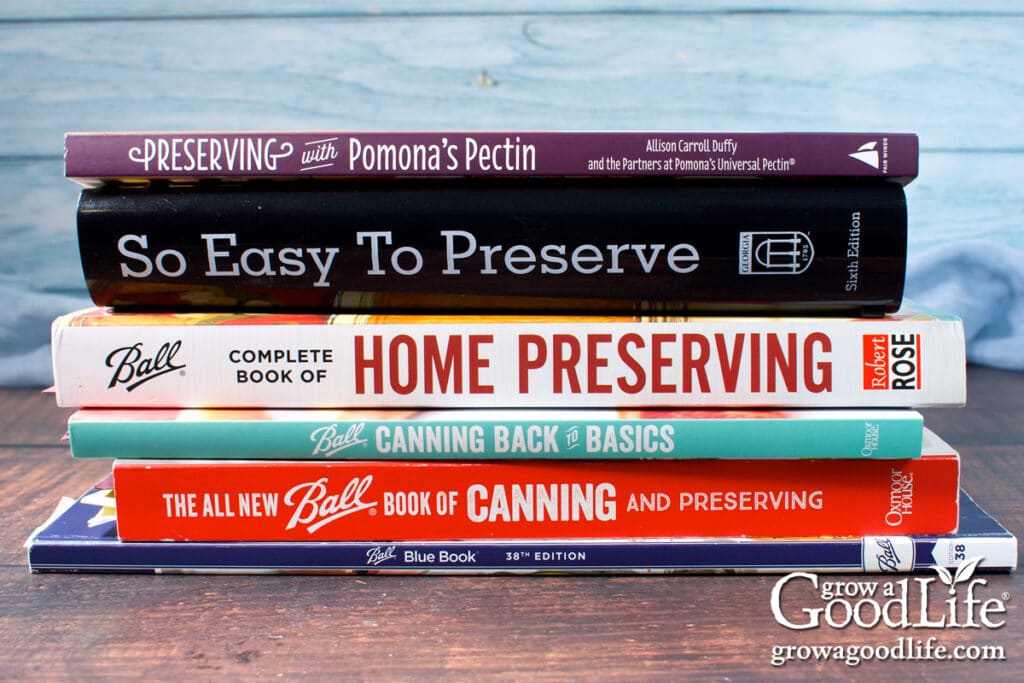
The books recommended in this guide come from these reputable sources. When followed as directed, these recipes ensure both safety and high-quality preservation, so you can confidently preserve jars that are safe and taste good. The following books are valuable additions to any home canning library:
Recommended Home Canning Recipe Books
These books provide scientifically tested recipes that ensure food safety and high-quality results. If you want trusted guidance to help you preserve your harvest safely, adding these books to your home library will give you reliable, up-to-date knowledge at your fingertips.
Please keep in mind that food safety guidelines evolve as new research emerges. What may have been considered safe in the past might no longer meet today’s standards. Additionally, some printed canning books have contained known errors in past editions. It is always recommended to use the newest, updated version of these books or make notes in older copies regarding any changes, updates, or corrections.
These are the best canning cookbooks from trusted sources, and I will keep them updated over time. If you come across older canning books, compare their recipes to those from the NCHFP, Ball, or Bernardin websites to ensure they align with modern safety recommendations.
So Easy to Preserve
This comprehensive canning book is published by the University of Georgia’s Cooperative Extension and includes updated, scientifically tested recipes that follow U.S. Department of Agriculture (USDA) safety recommendations.
Initially published in 1984, it has been updated regularly, with the most recent edition being the 6th edition (2020).
The newest edition is a 196-page, spiral-bound resource book with about 200 lab-tested canning, pickling, freezing, and dehydrating recipes.
Be cautious of unauthorized copies sold online. The only authorized place to purchase this book is from the UGA Extension Publications website:
My favorite recipes from this book: Stewed tomatoes (which I have adapted from a Rotel-style tomatoes recipe), pickled bell peppers, and canning whole tomatillos.
USDA Complete Guide to Home Canning
This book contains all the research-based recommendations and recipes for safe canning from the National Center for Home Food Preservation. It is updated regularly to reflect the latest safety guidelines. The newest edition (Revised and updated in 2015), is a 196-page, spiral-bound resource book, making it a user-friendly guide for first-time and experienced canners looking to refine their techniques.
Beware of counterfeit copies sold online. Some unauthorized versions contain errors that could impact food safety. The only authorized source for the printed edition is Purdue University:
The free PDF version is available from the National Center for Home Food Preservation website. You can download this, place it on a thumb drive, bring it to your local copy center, and have it printed and bound into a booklet:
My favorites in this book include: Applesauce, spaghetti sauce, and chile con carne.
Ball Canning Books
Ball has been a trusted canning resource for generations, producing canning jars, lids, and research-tested canning guides with detailed instructions and reliable recipes. Check the FAQs section on the Ball Mason Jar website for updates and corrections to the printed books.
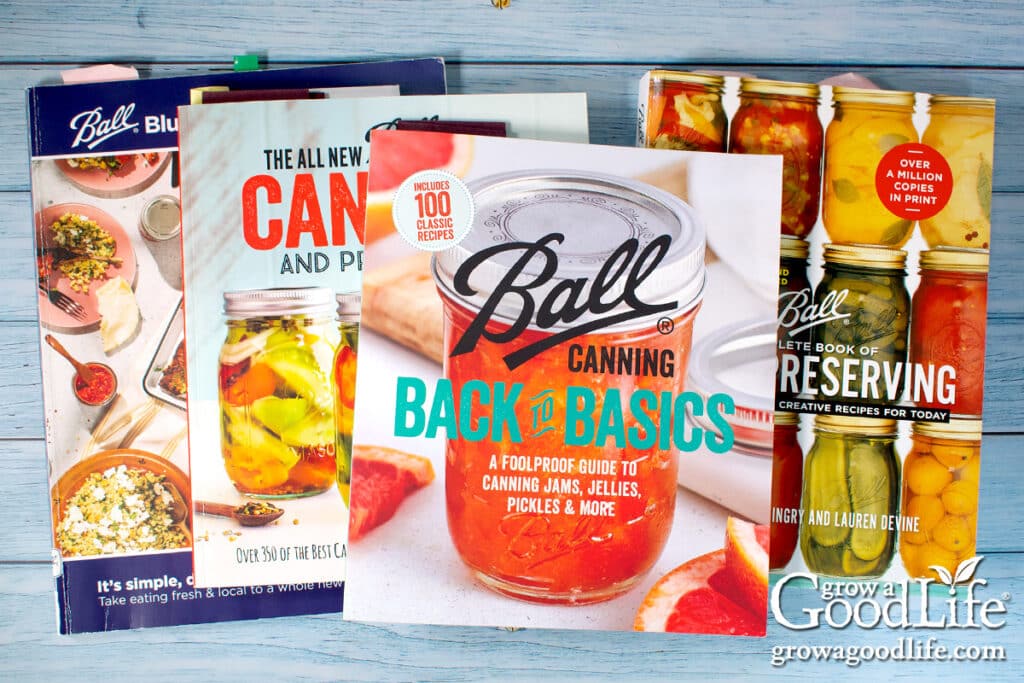
You can purchase ball canning books in the seasonal canning section at your local authorized retailers or online at the links below.
Ball Blue Book Guide to Preserving
Initially published in 1909, this book is frequently updated with tested recipes for safe canning and food preserving.
The newest, 38th edition, published in 2024, includes over 500 recipes covering canning, pickling, freezing, and dehydrating.
My favorites in this book include: Dill pickles, green beans, and roasted poblano salsa (new in the 38th edition).
Ball Complete Book of Home Preserving
This book offers detailed instructions for beginners and advanced tips for experienced canners. It contains 400 recipes, including safe canning recipes for jams, jellies, salsas, condiments, relish, pickles, tomatoes, vegetables, meats, soups, stews, and sauces.
My favorites in this book include: Slow-roasted Mexican tomato sauce (salsa ranchera) and dill relish.
The All New Ball Book of Canning and Preserving
A modernized take on food preservation, this book includes about 350 recipes spanning canning, fermenting, freezing, dehydrating, curing, and smoking, along with ideas for using preserved food.
My favorites in this book include: Chicken and beef bone broths, and the simple one-jar meals like Chicken Chili Verde, Chicken Curry, Chicken and Gravy Dinner in a Jar, Pot Roast in a Jar, Beef Stroganoff, and Shredded Chipotle Beef for Tacos.
Ball Canning Back to Basics
This is an excellent book for first-time canners, focusing on simple recipes for water bath canning. It has 100 easy-to-follow recipes for jams, jellies, fruit butters, sauces, and pickles.
Popular recipes in this book include: Corn and cherry tomato salsa, apple pie filling, and saucy sloppy joe starter.
Preserving with Pamona’s Pectin
If you love making jams and jellies but want to avoid the high sugar content that traditional pectin requires, Preserving with Pomona’s Pectin is the perfect guide.
Pomona’s Pectin is a sugar-free, preservative-free citrus pectin that allows you to create delicious preserves without relying on sugar to achieve the perfect set.
Written by Allison Carroll Duffy, a trained Master Food Preserver, in collaboration with the original creators of Pomona’s Pectin, this book features over 80 recipes for jams, jellies, conserves, marmalades, and even pie fillings. Recipes containing low-acid or borderline-acid ingredients have been lab tested, while all high-acid recipes follow USDA guidelines to ensure both safety and quality.
- Preserving with Pamona’s Pectin (2021 Edition) by Allison Carroll Duffy
My favorite recipes from this book include: Low sugar strawberry jam, honey sweetened grape jelly, and low sugar blueberry jam.
What About Other Books?
There are many canning books available, and while some may be excellent resources, I can only confidently recommend those backed by scientific research.
Since I’m not a food scientist, I rely on trusted sources like the National Center for Home Food Preservation (NCHFP) and Ball, which rigorously test their recipes for safety. That doesn’t mean other books aren’t safe, it simply means I can’t personally verify their methods.
Here at Grow a Good Life, I always make sure to cite the source of my canning recipes and identify any safe adaptations, often linking to research-based resources that explain why a modification is acceptable.
If you come across a canning book that isn’t on this list, a good way to evaluate its reliability is to compare its recipes to those published by the NCHFP, Ball, or university extension offices. This can help you determine whether the methods align with tested guidelines and ensure the food you preserve is safe for long-term storage.
Ultimately, my goal is to provide you with the best, most reliable information possible so you can preserve your harvest safely. I feel confident suggesting the home canning books listed in this guide.
Final Thoughts
The canning books featured in this article provide scientifically tested recipes to ensure food safety and high-quality results. Whether you’re new to canning or have years of experience, these updated resources will be invaluable additions to your library.
I am committed to sharing only research-tested, safe canning recipes, along with a range of other food preservation practices. My goal is to help you preserve your harvest with confidence, knowing that every recipe I share, either on the blog or in my ebooks, is developed with food safety as the top priority.
By relying on trusted sources like these books, you can enjoy the flavors of home-canned foods while ensuring the health and well-being of your family.
You May Also Like:
- Pressure Canner Buying Guide
- 6 Tips to Prepare for Canning Season
- Water Bath Canner Buying Guide
- Gift Guide for Home Canners on Your List
- Safe Canning Resources: Trusted Guides for Home Food Preservation
40+ Meals in a Jar Pressure Canning Recipes
In this eBook, you will find 50 pressure canning recipes, including 44 meals, along with homemade stocks and bone broths. Recipes include soups, stews, chilis, beans, beef, pork, and poultry. Explore the world of preserving delicious home-cooked meals for all seasons.


